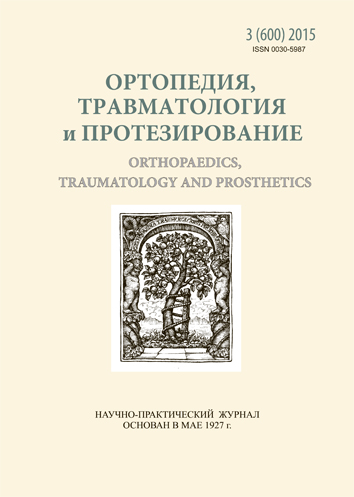Bite wounds: epidemiology and treatment
DOI:
https://doi.org/10.15674/0030-59872015399-102Keywords:
bite wounds, epidemiology, methods of treatmentAbstract
Objective: To highlight the problem and up-to-date methods of treatment of bite wounds that will help to reduce infectious complications, poor cosmetic and functional results.
Methods: in the period of 2012–2014 in Lviv from the bites of animals there were affected 2456 people of whom 510 (344 children and 166 adults) were treated at the hospitals. Majority of affected people have been bitten by dogs — 1 993 (81.1 %), cats — 383 (15.6 %), rodents and other animals — 80 (3.3 %). Localization of injuries was: head, neck — in 58 (11.4 %) patients; upper limbs — 172 (33.7 %); thorax, abdomen, back, buttocks, genitals — 27 (5.3 %); lower limbs — 165 (32.4 %); combination of different anatomical areas — 88 (17.2 %). Antiabic vaccination carried out in 1078 patients. It were noted two post-vaccination reactions.
Results: The high level of trauma registered since June to September. Localization of bite depended on age and sex of the victim: in children up to 5 years lips, cheeks, nose, eyelids, neck and upper limbs more often affected, and in elderly patients - lower limbs. Often causes of infectious complications were delays in medical care seeking, selftreatment, inadequate tactics of treatment. Mechanical cleaning of the wound, removal of nonviable tissues, washing with antiseptic solutions are the most important links in prevention of infectious complications of bite wounds. If necessary there was performed a plastic of defects with local tissues or autodermaplasty, used stalked and rotary skin flaps. Damaged blood vessels, nerves and tendons were restored during surgical manipulation. In the case of bone fractures metalosteosynthesis with Kirschner wires and with apparatus of external fixation was conducted. Conclusion: better cosmetic results can be achieved just with adequate sanitation and closure of the wound at the time of initial processing. The decision to close the wound based on the risk of its infection, depending on the location, severity and prescription of injury, age and comorbidities in the patient.
References
- Mogilev B. Yu. Practical rabiologiya with practical work on rabies destination. — Kherson: Nadnіpryanochka, 2009. — 248 p.
- Abuabara A. A review of facial injuries due to dog bites / A. Abuabara // Med. Oral. Patol. Oral. Cir. Bucal. — 2006. — Vol. 11 (4). — P. E348–E450.
- Bacteriologic analysis of infected dog and cat bites. Emergency Medicine Animal Bite Infection Study Group / D. A. Talan, D. M. Citron, F. M. Abrahamian, [et al.] // N. Engl. J. Med. — 1999. — Vol. 340 (2). — P. 85–92.
- Callaham M. L. Treatment of common dog bites: infection risk factors / M. L. Callaham // J. Am. College of Emergency Physicians. — 1978. — Vol. 7. — P. 83–87.
- Effect of povidone-iodine and saline soaking on bacterial counts in acute, traumatic, contaminated wounds / R. L. Lammers, M. Fourre, M. L. Callaham, T. Boone // Ann. Emerg. Med. — 1990. — Vol. 19 (6). — P. 709–714.
- Galloway R. E. Mammalian bites / R. E. Galloway // J. Em. Med. — 1987. — Vol. 6. — P. 325–331.
- Maimaris C. Dog-bite lacerations: a controlled trial of primary wound closure / C. Maimaris, D. N. Quinton // Arch. Emerg. Med. — 1988. — Vol. 5 (3). — P. 156–161.
- Ozanne-Smith J. Dog bite and injury prevention-analysis, critical review, and research agenda / J. Ozanne-Smith, K. Ashby, V. Z. Stathakis // Inj. Prev. — 2001. — Vol. 7 (4). — P. 321–326.
- Presutti R. J. Prevention and treatment of dog bites / R. J. Presutti // Am. Fam. Physician. — 2001. — Vol. 63. — P. 1567–1574.
- Smith M. R. Barking up the wrong tree? A survey of dog bite wound management / M. R. Smith, A. Walker, J. Brenchley // Emerg. Med. J. — 2003. — Vol. 20 (3). — P. 253–255.
- Weiss H. B. Incidence of dog bite injuries treated in emergency departments / H. B. Weiss, D. I. Freidman, J. H. Coben // JAMA. — 1998. — Vol. 279 (1). — P. 51–58.
Downloads
How to Cite
Issue
Section
License
Copyright (c) 2015 Vasil Zhukovskiy

This work is licensed under a Creative Commons Attribution 4.0 International License.
The authors retain the right of authorship of their manuscript and pass the journal the right of the first publication of this article, which automatically become available from the date of publication under the terms of Creative Commons Attribution License, which allows others to freely distribute the published manuscript with mandatory linking to authors of the original research and the first publication of this one in this journal.
Authors have the right to enter into a separate supplemental agreement on the additional non-exclusive distribution of manuscript in the form in which it was published by the journal (i.e. to put work in electronic storage of an institution or publish as a part of the book) while maintaining the reference to the first publication of the manuscript in this journal.
The editorial policy of the journal allows authors and encourages manuscript accommodation online (i.e. in storage of an institution or on the personal websites) as before submission of the manuscript to the editorial office, and during its editorial processing because it contributes to productive scientific discussion and positively affects the efficiency and dynamics of the published manuscript citation (see The Effect of Open Access).














